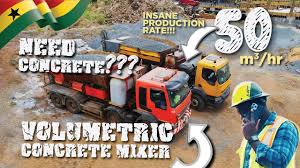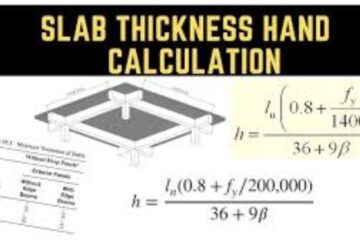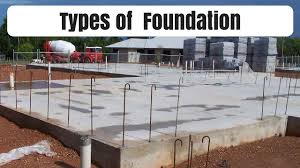Table of Contents
ToggleExplore 7 Types of Ready Mix Concrete: A Guide to Choosing the Best Mix for Your Project
Introduction
Ready mix concrete is a key material in construction, renowned for its reliability, efficiency, and ease of use. Produced in a controlled environment and delivered ready to use, it offers numerous advantages over traditional site-mixed concrete. This comprehensive guide explores seven different types of ready mix concrete, detailing their properties, best applications, and tips for choosing the right mix for your project. By understanding these types, you can ensure optimal performance, durability, and cost-effectiveness in your construction endeavors.

1. What is Ready Mix Concrete?
Ready mix concrete is a pre-mixed blend of cement, aggregates (such as sand and gravel), water, and optional additives. The mix is prepared at a batching plant under controlled conditions, ensuring a consistent product that meets specific engineering standards. Once mixed, it is transported to the construction site in a mixer truck, where it remains workable until application.
Key Components:
- Cement: Acts as the binder that holds the aggregates together once cured.
- Aggregates: Include fine aggregates (sand) and coarse aggregates (gravel or crushed stone) that provide bulk and strength.
- Water: Hydrates the cement, allowing it to set and gain strength.
- Additives: Optional chemicals that modify the properties of the concrete, such as accelerators for faster setting or retarders to extend working time.
How It’s Made:
- Batching: Ingredients are accurately measured and combined in a batching plant.
- Mixing: The mixture is thoroughly combined in a concrete mixer to achieve uniformity.
- Transportation: The concrete is transported to the site in a mixer truck, which keeps it agitated to prevent premature setting.
2. Benefits of Using Ready Mix Concrete
Ready mix concrete offers numerous benefits over traditional site-mixed concrete:
- Consistency: Factory-controlled mixing ensures uniform quality and strength, reducing variability.
- Efficiency: Ready mix concrete saves time and labor by eliminating the need for on-site mixing and measuring.
- Cost-Effectiveness: Reduces costs associated with labor, equipment, and waste. Also, minimizes the risk of errors and material wastage.
- Quality Control: Stringent quality checks at the plant ensure the concrete meets industry standards and project specifications.
- Environmental Impact: Efficient production processes and reduced on-site waste contribute to greener construction practices.
3. Types of Ready Mix Concrete
3.1 Standard Ready Mix Concrete
Overview:
Standard ready mix concrete is the most commonly used type. It comprises a basic blend of cement, water, and aggregates. This versatile concrete mix is suitable for a wide range of applications and is known for its reliability and cost-effectiveness.
Best Uses:
- Residential Foundations: Provides a solid base for homes and small buildings.
- Sidewalks and Driveways: Durable enough for everyday use and traffic.
- Slabs and Floors: Ideal for creating even and stable surfaces in various structures.
- Minor Repairs: Effective for patching and repairing small areas.
Advantages:
- Versatility: Suitable for a variety of construction tasks.
- Accessibility: Widely available and commonly used, making it easy to source.
- Affordability: Generally less expensive compared to specialized concrete mixes.
Considerations:
- Performance Limitations: May not meet the specific needs of projects requiring high-strength or specialized characteristics.
3.2 Volumetric Concrete

Overview:
Volumetric concrete is mixed on-site using a mobile batching unit. This type allows for precise adjustments to the mix design and ensures that only the required amount of concrete is produced, minimizing waste.
Best Uses:
- Remote Locations: Ideal for sites with limited access where transporting pre-mixed concrete is challenging.
- Projects with Variable Mix Designs: Useful for applications requiring different concrete mixes for different parts of the project.
- On-Demand Concrete: Perfect for situations where immediate concrete needs arise.
Advantages:
- Customization: Provides the flexibility to modify the mix design on-site.
- Waste Reduction: Produces only the amount needed, reducing excess and waste.
- Flexibility: Adaptable to varying project requirements and conditions.
Considerations:
- Equipment and Expertise: Requires specialized mobile batching equipment and trained personnel.
- Cost: May be more costly for small projects due to equipment and operational needs.
3.3 Rapid-Set Concrete
Overview:
Rapid-set concrete is formulated to set and gain strength quickly. It contains chemical additives that accelerate the curing process, making it suitable for time-sensitive projects and urgent repairs.
Best Uses:
- Emergency Repairs: Ideal for quick fixes in critical areas, such as roadways and infrastructure.
- Road Repairs: Useful for minimizing downtime during road maintenance.
- Quick Setting Slabs: Suitable for projects that need to be completed quickly, such as industrial floors and pavements.
Advantages:
- Fast Curing Time: Allows for rapid project completion and reduces waiting periods.
- Efficient: Minimizes disruptions and downtime, especially in high-traffic areas.
- Cold Weather Performance: Performs well in cold conditions, where standard concrete might take longer to set.
Considerations:
- Cost: Typically more expensive due to the inclusion of accelerators and additives.
- Handling: Requires precise timing and management to achieve optimal results.
3.4 Fiber-Reinforced Concrete
Overview:
Fiber-reinforced concrete incorporates fibers, such as steel, glass, synthetic, or natural fibers, into the mix. These fibers enhance the concrete’s tensile strength, impact resistance, and overall durability.
Best Uses:
- Industrial Floors: Suitable for high-traffic areas and environments where extra durability is needed.
- Pavements and Overlays: Ideal for surfaces exposed to heavy loads and wear.
- Reinforced Structures: Effective for applications requiring increased strength and resistance.
Advantages:
- Crack Resistance: Helps reduce the occurrence of cracks and surface imperfections.
- Impact Strength: Provides enhanced resistance to impact and stress.
- Durability: Extends the lifespan of concrete surfaces, especially in challenging conditions.
Considerations:
- Cost: Can be more expensive due to the additional cost of fibers.
- Mixing: Requires careful mixing to ensure even distribution of fibers throughout the concrete.
3.5 Self-Consolidating Concrete (SCC)
Overview:
Self-consolidating concrete is highly flowable and can spread into place and fill formwork without the need for mechanical vibration. It is designed for complex formwork and heavily reinforced sections, providing a smooth finish.
Best Uses:
- Architectural Elements: Ideal for intricate designs and detailed formwork.
- Precast Components: Suitable for producing uniform and high-quality precast concrete elements.
- Heavily Reinforced Structures: Effective for structures with dense reinforcement where vibration is challenging.
Advantages:
- Superior Flowability: Easily fills formwork and reaches all areas without vibration.
- High-Quality Surface Finish: Achieves a smooth, high-quality finish with minimal effort.
- Labor Reduction: Reduces the need for mechanical vibration and compaction, streamlining the construction process.
Considerations:
- Mix Design: Requires precise mix design and quality control to maintain flowability and performance.
- Handling: May need specialized handling and placement techniques to preserve its flowability.
3.6 Decorative Concrete

Overview:
Decorative concrete combines functional and aesthetic elements by incorporating various finishing techniques such as stamping, staining, polishing, or coloring. It enhances the visual appeal of concrete surfaces while maintaining their structural integrity.
Best Uses:
- Patios and Walkways: Ideal for creating attractive outdoor living spaces.
- Driveways and Pool Decks: Adds aesthetic appeal and functionality to driveways and pool areas.
- Interior Flooring: Perfect for stylish and durable indoor floors that mimic other materials like stone or tile.
Advantages:
- Design Versatility: Offers a wide range of design options, including colors, textures, and patterns.
- Durability: Provides a durable surface that is low maintenance and resistant to wear and weather.
- Increased Property Value: Enhances the overall appearance and value of residential and commercial properties.
Considerations:
- Sealing: Often requires sealing to protect the surface and maintain its appearance over time.
- Cost: Costs can vary significantly based on design complexity and finishing techniques.
3.7 High-Performance Concrete (HPC)
Overview:
High-performance concrete is engineered to provide exceptional strength, durability, and resistance to harsh conditions. It is formulated with advanced materials and precise mix designs to meet stringent performance requirements.
Best Uses:
- High-Rise Buildings: Suitable for tall structures where high compressive strength is essential.
- Bridges and Infrastructure: Ideal for infrastructure projects exposed to severe environmental conditions such as moisture and chemicals.
- Extreme Conditions:
Overview (Continued): Ideal for applications requiring high durability and resistance to extreme conditions.
Advantages:
- Exceptional Strength: Provides high compressive and tensile strength, making it suitable for demanding structural applications.
- Enhanced Durability: Offers superior resistance to environmental factors such as moisture, chemicals, and temperature fluctuations.
- Extended Service Life: Reduces maintenance and replacement needs due to its long-lasting performance.
Considerations:
- Cost: Typically more expensive due to the use of advanced materials and complex mix designs.
- Expertise Required: Requires precise formulation and expert handling to achieve the desired properties and performance.
4. How to Choose the Right Type of Ready Mix Concrete
Selecting the right type of ready mix concrete involves considering several factors to ensure it meets the specific needs of your project:
- Project Specifications: Assess the structural requirements, including load-bearing capacity, exposure conditions, and desired finish. For example, if you need concrete for a high-rise building, high-performance concrete may be necessary.
- Environmental Conditions: Consider factors such as temperature, humidity, and exposure to chemicals. In cold climates, rapid-set concrete might be preferred, while fiber-reinforced concrete could be beneficial for areas with high impact or abrasion.
- Budget: Evaluate the cost implications of different concrete types, including material, labor, and equipment costs. Standard ready mix concrete is generally more affordable, while specialty mixes like high-performance concrete may have a higher price tag.
- Aesthetic Requirements: If the visual appeal of the concrete is important, such as for driveways or decorative elements, opt for decorative concrete with the desired finish.
- Project Size and Complexity: For large projects or those requiring precise mix adjustments, volumetric concrete or self-consolidating concrete may be more suitable.
5. Frequently Asked Questions (FAQs)
Q1: What is the difference between ready mix concrete and site-mixed concrete?
Ready mix concrete is pre-mixed in a plant and delivered ready to use, ensuring consistency and quality. Site-mixed concrete is mixed on-site, which can lead to variability in quality and performance.
Q2: Can I use decorative concrete in high-traffic areas?
Yes, decorative concrete can be used in high-traffic areas, but it is essential to apply a suitable sealer to protect the surface from wear and stains.
Q3: How does fiber-reinforced concrete enhance durability?
Fiber-reinforced concrete includes fibers that help distribute stresses more evenly throughout the concrete, reducing the likelihood of cracks and improving resistance to impact and abrasion.
Q4: What are the advantages of using self-consolidating concrete?
Self-consolidating concrete flows easily and fills formwork without the need for mechanical vibration, which is particularly useful for complex forms and heavily reinforced structures.
Q5: How long does rapid-set concrete take to set?
Rapid-set concrete typically sets within a few hours, depending on the mix design and environmental conditions, allowing for quicker project completion.
Q6: Is high-performance concrete suitable for all construction projects?
High-performance concrete is ideal for projects requiring superior strength and durability, such as high-rise buildings and infrastructure exposed to severe conditions. It may not be necessary for standard residential applications.
Q7: Can volumetric concrete be used for small projects?
While volumetric concrete is highly flexible and customizable, it may be more cost-effective for larger projects or those requiring on-site adjustments. For smaller projects, standard ready mix concrete may be more economical.
Q8: How do I maintain decorative concrete surfaces?
Decorative concrete surfaces should be regularly cleaned and sealed to maintain their appearance and protect against stains, moisture, and wear.
Q9: What factors affect the curing time of concrete?
Curing time is influenced by factors such as the type of concrete mix, environmental conditions (temperature and humidity), and the presence of curing compounds or additives.
Q10: Can self-consolidating concrete be used in cold weather?
Self-consolidating concrete can be used in cold weather, but additional measures such as using heated water or protecting the concrete from freezing may be necessary to ensure proper curing.
Q11: How does fiber-reinforced concrete compare to traditional concrete in terms of cost?
Fiber-reinforced concrete is typically more expensive than traditional concrete due to the cost of fibers, but it offers enhanced performance and durability, which may justify the higher cost.
Q12: Is it necessary to use additives in rapid-set concrete?
Additives are essential in rapid-set concrete to accelerate the setting time and achieve the desired performance. These may include accelerators, retarders, or water-reducing agents.
Q13: What are the environmental benefits of using ready mix concrete?
Ready mix concrete can contribute to environmental sustainability by reducing on-site waste, improving material efficiency, and minimizing the need for additional equipment and labor.
Q14: Can high-performance concrete be recycled?
Yes, high-performance concrete can be recycled. Concrete can be crushed and reused as aggregate in new concrete mixes, contributing to sustainable construction practices.
Q15: What should I consider when choosing a supplier for ready mix concrete?
When choosing a supplier, consider factors such as the supplier’s reputation, quality control practices, delivery capabilities, and the ability to meet specific project requirements.
6. Conclusion
Selecting the right type of ready mix concrete is crucial for the success and longevity of your construction project. Each type of ready mix concrete has unique properties and applications, from the versatility of standard ready mix to the specialized performance of high-performance concrete. By understanding these types and their benefits, you can make an informed decision that meets your project’s specific needs and ensures optimal results. Consult with experts, evaluate your project’s requirements, and choose the best concrete mix to achieve a durable and successful construction outcome.
If you want to get more knowledge about this so read more.
If you want more articles about Civil Engineering click on link.





